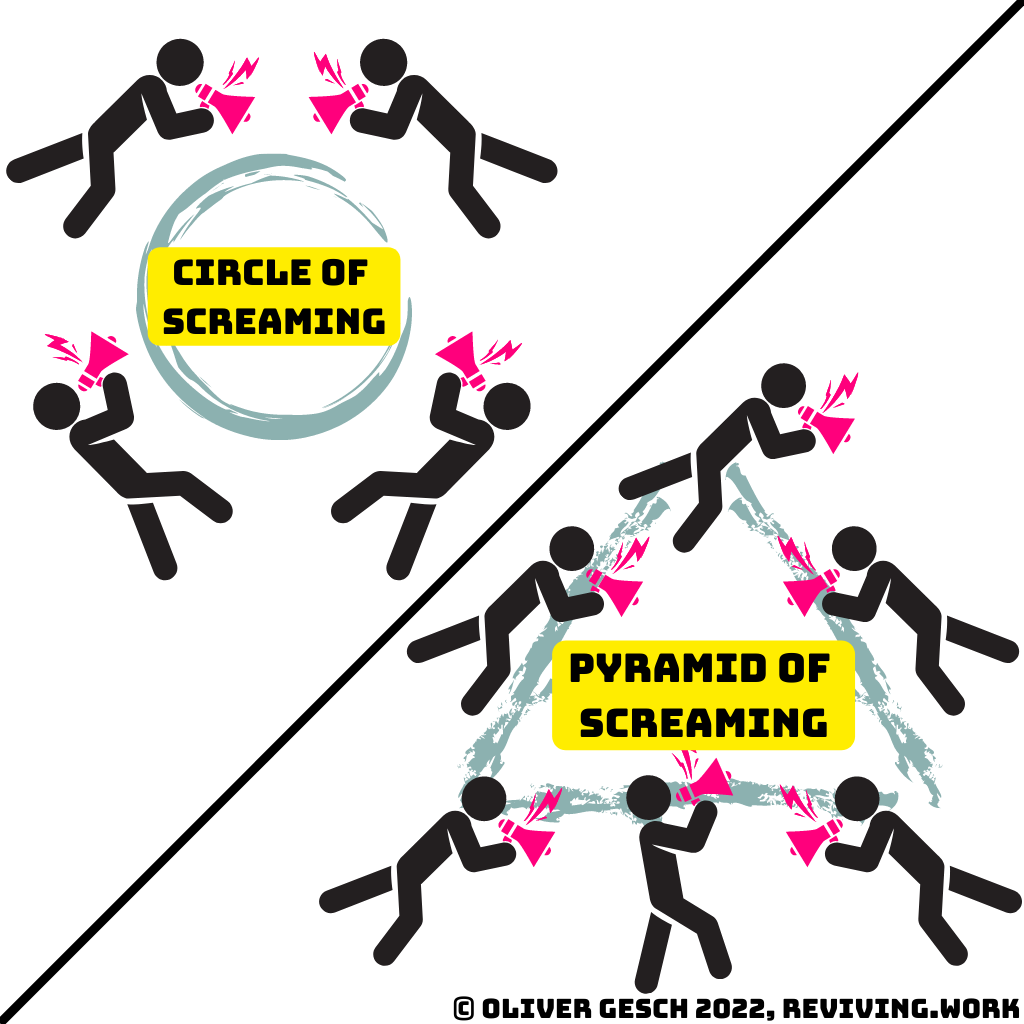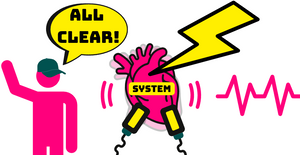
Organization
A contemporary definition says that organizations are made up of social interactions between individuals in a similar context with a shared purpose. It is a complex social construct.
A wise man once said that great corporations (and their organizations) are built on people screaming at each other. This is how corporations get their work done. In fact, there is even an elaborate construct to all that screaming: it is called the grand pyramid of screaming. It works like this: When your boss screams at you, you scream at the next level beneath you, and that person will likewise scream at someone lower in the hierarchy, and so on.
This top-to-bottom chain of screaming has to end somewhere, but it might also be a circle of screaming; who knows! Anyhow, that wise man was, of course, Barney Stinson, a beloved character of How I met your mother. And funny enough, he wasn’t too far from our contemporary understanding of organizations.
Organizations, according to social sciences
So what is it: a circle of screaming, a chain of screaming, or a pyramid of screaming? The concept of a (social) organization is actually closer to all those metaphors than you might think. The primary characteristic of an organization is the communication, or interaction, among its parts. Usually, these interactions involve dialogs, emails, chat messages, or, sometimes, screaming at each other!
What Barney didn’t get quite right is the symbolic, geometric form. Although the pyramid of screaming reminds us of most organizations’ hierarchy, it does not represent all dimensions of its interactions. The circle or chain of screaming faces the same issue. Instead, we should think of organizational communication as a complex many-to-many connection, similar to a network.
This definition of organizations has many significant consequences that lead to numerous conclusions compared to classical management theorists’ beliefs. One compelling example is the new focus on improving the organization’s quality of its interactions instead of trying to improve its parts: the individuals.
Examples of social organizations might include the interactions of a group, a team, or several intertwined teams at work, a sports team, a social club, a school (class), or any other gathering of individuals in a social context.
Organizations, according to scientific management
An organization’s classical (scientific) management definition says that organizations are made up of their individual parts or assets, e.g., cash, inventory, investments, IP and employees, etc.
This definition is the root of a lot of evil and has led to countless absurd initiatives in many organizations worldwide. The inevitable consequences are that organizations only improve if they improve their parts or assets. Due to this belief, individuals are treated as assets or objects that need continuous improvement. We remove the social context from the individual’s interactions and become victims of the Fundamental Attribution Error (FAE). We evaluate, judge, and rate individuals.
Finally, even if that second definition is correct (which it is not), we still must consider complex social system theory, which clearly says that improving individual parts does not guarantee an improved system. Russel Ackoff has spent a lifetime researching this topic and proving this conclusion.
The distinction between organizations seen as the quality of their interactions or organizations seen as the quality of their parts or individuals makes a world of difference.


